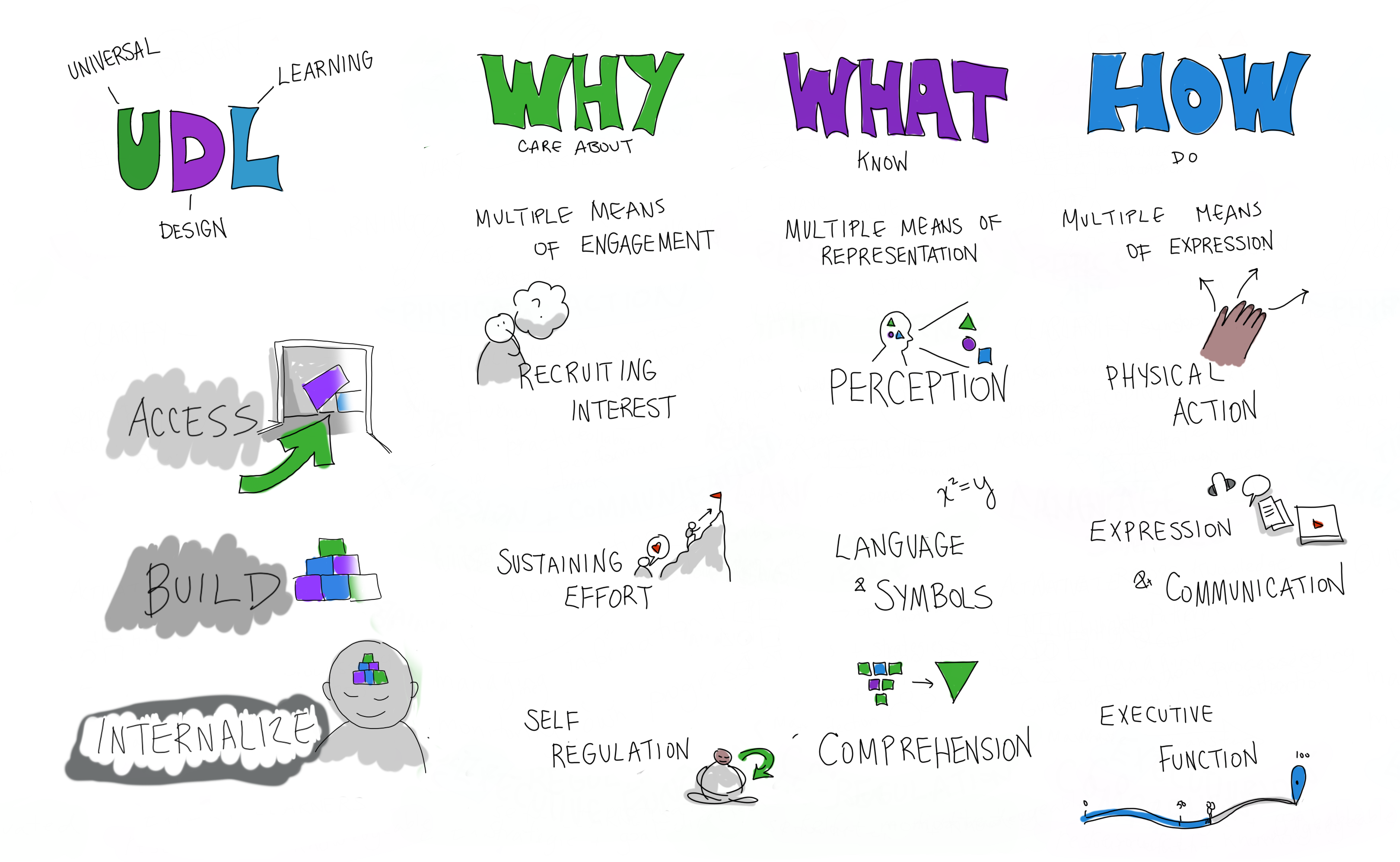What is the universal design for learning?
To understand this week’s topic it is pivotal to understand what the Universal Design for Learning is. The UDL is an educational development strategy that prioritizes diverse and inclusive teaching methods to accommodate all types of learners.
It consists of 3 key elements: Providing multiple means of
- Engagement
- Representation
- Expression
The UDL ensures that all students are able to participate by having various modes of accessibility, while keeping content engaging to each individual. I think UDL can be beneficial in both a physical and a digital classroom. For example, in a physical classroom, it offers various types of assessment methods that support different needs. While in a digital setting, it makes use of different online learning platforms and programs, such as the one we use for this blog, to diversify the content.
Below is a visual to illustrate the concepts of UDL.

How can we ensure accessibility in an online setting?
There are many different aspects that can contribute to a successful online learning environment. In order to accommodate all students, certain measures such as closed captions or speech tools have to be put in place for those with disabilities. On top of this, having the content in an array of formats (video, text, etc.) provides students with options in order to benefit them. Apart from disability measures, having an easy to navigate and clear online structure is another helpful aspect. In my own learning, the Uvic CAL program provided me with some extra time and quiet space I needed when I was in first year, and made my testing experience coincide with what I needed to do well.
I have provided a link to the Uvic CAL website, it might help you out too!
EdTech and Student Security
The main ethical consideration of EdTech I want to touch on is the privacy of students. Students’ sensitive data can be collected, and in some cases can be used. It’s very important to protect students’ privacy. I think educators can still use EdTech to enhance learning, but should pay close attention to the privacy laws and regulations of the programs/websites they are using. A little research may go a long way.
A respectful online environment
Continuing with the topic of ethical learning and privacy, it is very important for students to understand and comply with online ethical guidelines. This means students need to be very aware of their peers’ privacy, and be mindful about sharing others’ information. Confidentiality is a huge ethical consideration. Along with this, contributing to an ethical and inclusive environment means upholding respect online. There is no room for bullying, negative comments, or harassment. I try my best to welcome all diverse views, and disengage from any harmful online behaviour.
Below is a TED Talk with some more information on online safety.
Connecting UDL to my own experiences
The first thing that comes to mind is my experience with an online learning environment during COVID. During this time, all students had to have access to the internet in order to participate. My school made sure to give out computers to those who did not have technology at home, which is part of the accessibility category of the UDL. However, they did not account for internet access, which could have greatly affected those who did not have access at home, and did not provide for an equal learning experience.
Thanks for Reading 🙂